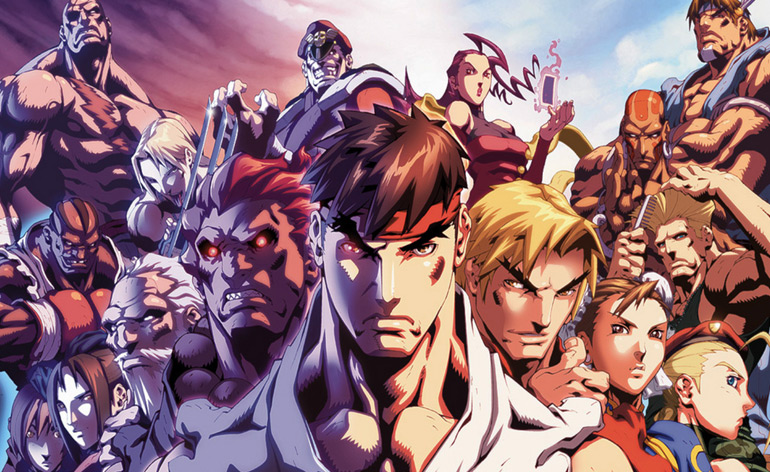
So many martial artists born during the 21st century discovered their passion through popular media like movies and television. However, it was around the 1980’s when a new form of popular entertainment gained momentum among the masses – video games.
With the emergence of the fighting game genre, lovers of martial arts could actually become the very masters of combat that inspired them through movies and television, with fighting game series Mortal Kombat and Tekken quickly becoming a cultural phenomenon.
However, it is generally agreed among gamers that Capcom’s Street Fighter was the fighting game series that kicked off the trend. Almost three decades after its debut it’s endured as one of the most acclaimed and beloved video game series in history. Two ill-fated attempts at adapting the franchise into live-action films would be powerless to dilute the undying love “Street Fighter” has held among fans since its inception, and after years of certainty that their beloved series would never see a proper live-action adaptation.
Street Fighter: Assassin’s Fist is poised to reward the irrepressible patience of the series fanbase.
To commemorate the day that so many never thought would come, it only seems fitting to take a look back on the gaming series that brought us where we are today. So let’s hop in the time machine and take a trip down memory lane for a Street Fighter retrospective!
Street Fighter
The least remembered installment of the “Street Fighter” series was its first. Debuting in arcades in 1987, “Street Fighter” was at best a moderate success. It’s graphics were decent, and its character roster was diverse and colorful enough, with the characters Ryu, Ken, Adon, Sagat, Gen, Birdie, Retsu, and a few others making their debut (and, in some cases, their only appearance through the series as a whole) in the initial installment. However, what really made the first entry connect with fans was the gameplay. It’s simple but intriguing stages placed combatants side-by-side on a two-dimensional plane, allowing for participants to fully appreciate the glorious action that made up the game.
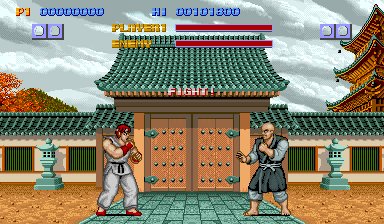
The first installment also introduced the eye-popping special moves and superhuman abilities that would become a staple of the series later on – maneuvers such as the Shoryuken, Tatsumaki, and of course, Hadouken were introduced in the initial entry, and would influence not only Street Fighter but virtually all fighting games that would follow in years to come. The game would also establish Ryu as the major protagonist of the series, with his defeat of Sagat “The Emperor of Muay Thai” in the final stage earning him the status of legend within the “Street Fighter” universe, as well as in the hearts of gamers all over the world. Ultimately, the first “Street Fighter” made a modest but respectable impact on the gaming world, but it proved just successful enough to warrant a sequel, which for most fans of the series is where the legacy of Street Fighter really begins!
The original Street Fighter
Street Fighter II series
While most franchises, be they movies, novels, comics, or video games tend to live or die on the first impression, “Street Fighter II: The World Warrior” emerged as the exception to that rule. Owing to the success of the “Street Fighter” spin-off game “Final Fight”, Capcom had decided to take another stab at the previous project, and its efforts paid off in spades.

Released in 1991, “Street Fighter II” became a smash hit among gamers across the globe. Arcades were regularly filled with the sound of jingling pockets as fans showed up by the dozens, even the hundreds, to try their hand at the fastest growing video game in the world, with living rooms filled with cries of “Hadouken” once the game was released for home consoles.
Street Fighter II upped the ante on the mind-blowing gameplay and over-the-top special abilities from the first installment, retaining Ryu and Ken from the initial character roster while E. Honda, Blanka, Dhalsim, Zangief, Guile, and the future first-lady of fighting games Chun-Li to the mix, with Sagat being added as an unplayable boss character alongside M.Bison, Vega, and Balrog. However, when the game was imported from Japan to the West, the character known as M. Bison, created as an analogue for boxer Mike Tyson, was renamed Balrog, while Balrog became Vega and Vega was redubbed M. Bison. This was to avoid the legal ramifications that might result from Mike Tyson’s likeness being used in the game.
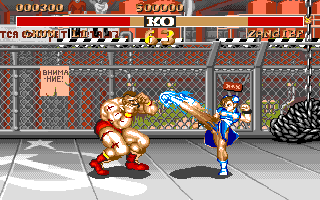 “Street Fighter” enjoyed a phenomenal reception among fans, launching the fighting game genre into the mainstream and retaining the title of Capcom’s best-selling game title of all time for over two decades, before finally being surpassed by “Resident Evil 5” in 2013. The success of “Street Fighter II” was so gargantuan that Capcom updated the title numerous times. The first, “Street Fighter II: Champion Edition” made the formerly unlockable boss characters of M. Bison, Sagat, Vega, and Balrog all playable, and enabled two competing players to fight one another with the same characters.
“Street Fighter” enjoyed a phenomenal reception among fans, launching the fighting game genre into the mainstream and retaining the title of Capcom’s best-selling game title of all time for over two decades, before finally being surpassed by “Resident Evil 5” in 2013. The success of “Street Fighter II” was so gargantuan that Capcom updated the title numerous times. The first, “Street Fighter II: Champion Edition” made the formerly unlockable boss characters of M. Bison, Sagat, Vega, and Balrog all playable, and enabled two competing players to fight one another with the same characters.
The next follow-up, “Super Street Fighter II”, added the characters of T-Hawk, Cammy, Dee Jay, and the series Bruce Lee analogue Fei Long to the roster, while the final update “Super Street Fighter II Turbo” saw the debut of Akuma as a hidden final boss for the player to face. The continued popularity of all things “Street Fighter II” would inspire the 1994 Hollywood film “Street Fighter: The Movie”, which itself saw a video game adaptation, that most fans of the series have done their best to forget (don’t worry, we’ll get to THAT in good time!), along with the vastly superior anime adaptation “Street Fighter II: The Animated Movie”. Few franchises in any medium of storytelling can claim to have truly kicked off with number two, but the “Street Fighter” series proved a pioneer in this regard, and it’s popularity would continue with the unexpected approach Capcom would take with the next installment.
Street Fighter (arcade) gameplay video:
Street Fighter Alpha series
Rather than go the more conventional route with a direct sequel, Capcom decided to take the franchise back in time with the “Street Fighter: Alpha” series. This set of “Street Fighter” games takes place between the events of the first and second game, affording fans a chance to see more of the origins of Ryu and Ken and their Ansatsuken training. The Alpha series, consisting of three separate games released from 1995 to 1998, is especially noted for the slight makeover it would give to Ken, extending his California surfer-like mane of blonde hair into a ponytail that would run the length of his back.
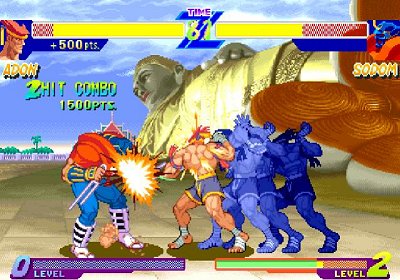 As with the “Street Fighter II” games, the “Alpha” series would also introduce a host of new characters into the “Street Fighter” universe, some of them pulled from the “Final Fight” series, including Charlie Nash, Cody, Dan, Guy, Ingrid, Karin, Maki, Juni, Juli, Rolento, Rose, and Sodom, along with Sakura, well-known to fans of the series as something of a groupie towards Ryu.
As with the “Street Fighter II” games, the “Alpha” series would also introduce a host of new characters into the “Street Fighter” universe, some of them pulled from the “Final Fight” series, including Charlie Nash, Cody, Dan, Guy, Ingrid, Karin, Maki, Juni, Juli, Rolento, Rose, and Sodom, along with Sakura, well-known to fans of the series as something of a groupie towards Ryu.
The series would also incorporate a take on the Ryu character hypothetically overtaken by the power of Satsui No Hado, or “Surge of Murderous Intent”, colloquially referred to as the Dark Hadou, said to overpower Ansatsuken practitioners should they be overcome by a powerful bloodlust. This would add a powerful, dynamic new element to the “Street Fighter” mythos akin to the Dark Side of the Force as seen in the “Star Wars” series, and remains as staple of the series’ to this day. The “Alpha” series would span three separate games, along with inspiring not one but two anime adaptations – “Street Fighter: Alpha – the Animation” in 1999, and “Street Fighter: Alpha – Generations” in 2005.
Gameplay video:
Street Fighter EX series
The franchise would further diverge from the path many fans had likely envisioned for it with the “Street Fighter EX” series. The EX series, which like every sub-series within the franchise would consist of three individual games released from 1996 to 2000, would make a major departure from previous installments with its incorporation of a 3D fighting plane into the gameplay more akin to the Tekken franchise, a major departure from previous installments which had, up to that point, kept the action on a 2D terrain.

The EX series is also notable for incorporating characters outside of the normal Street Fighter character roster. This was due to the series being co-developed alongside Capcom by the independent game publisher Arika. As a result, characters such as Blair, C. Jack, Ace, Allen, Garuda, and others would be seen taking on the classic Street Fighter characters in each installment of the series.
Unfortunately, the EX series is likely to be the only place any of these characters will cross over into the Street Fighter universe, due to Arika retaining the rights to all of them. As such, the EX series is viewed as non-canonical by fans, but that certainly hasn’t meant that they’ve overlooked the sub-series. As we’ll see in the next part, the non-canon entries in the Street Fighter legacy are anything but forgotten relics.
Street Fighter EX played on PlayStation:
As we can all agree, the history of any great fighting game franchise, especially Street Fighter, is far too great and expansive to cover in just one sitting! Be sure to return for Part 2 of our Street Fighter retrospective! (Part 2 is here!)


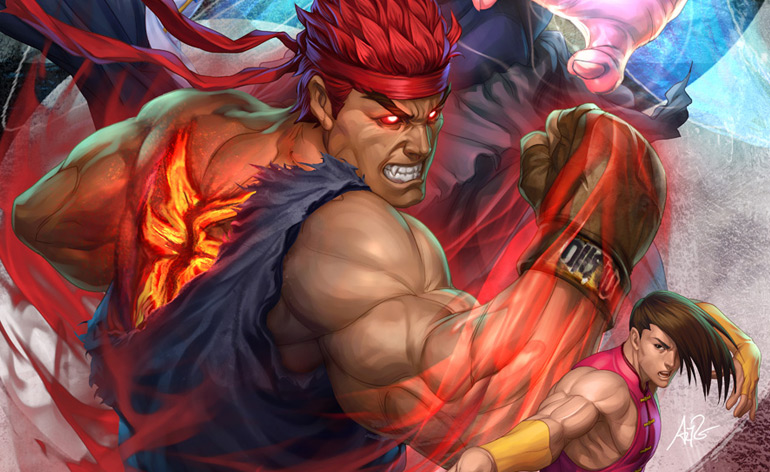
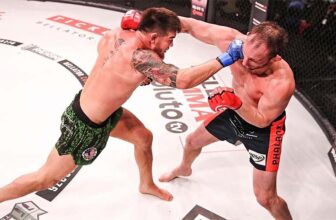



Do you remember the original Street Fighter arcade cabinets with the big rubber buttons? The harder you hit it, the harder you hit in the game! (Probably showing my age now!)
Indeed! Many a lunch period in high school did I spend sinking quarters into the Marvel VS Capcom machine in my local arcade, slamming buttons in a last ditch effort to swing the fight in my favor!
Hey, I never thought I’d feel like an old man before I reached 28, but I can throw out terms like Sega: Genesis and SNES to ten year olds and have them look at me like I’m Rip Van Winkle!
thx